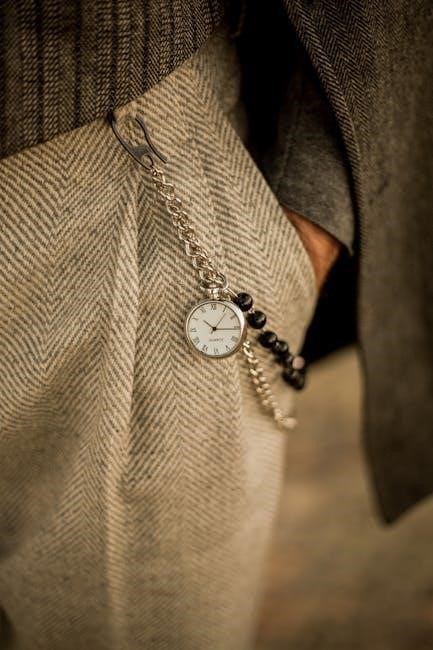balloon twisting instructions pdf
Balloon twisting is a creative art form that transforms simple balloons into intricate shapes and designs․ Using tools like pumps and balloons, artists create colorful, customizable decorations for events․ With step-by-step guides and tutorials available in PDF formats, mastering balloon twisting becomes accessible for beginners and professionals alike, offering endless possibilities for artistic expression and entertainment․
What is Balloon Twisting?
Balloon twisting is the art of shaping and manipulating balloons into various forms, such as animals, hats, and decorative items, using specific techniques․ It involves inflating balloons to the right pressure and then twisting and folding them into desired shapes․ This craft is popular at parties and events, offering personalized and creative entertainment․ With tools like pumps and balloons, anyone can learn balloon twisting through step-by-step guides, often available in PDF formats, making it accessible for both beginners and experienced artists to master new designs and share their creativity․
History and Popularity of Balloon Twisting
Balloon twisting has its roots in the mid-20th century, evolving from simple balloon animals created by clowns․ The craft gained popularity in the 1980s and 1990s as entertainers began sharing techniques․ Today, balloon twisting is a beloved art form worldwide, used in parties, events, and even therapeutic settings․ Its popularity stems from the availability of tools, tutorials, and PDF guides, making it accessible to all skill levels․ The rise of online communities and video tutorials has further fueled its growth, turning balloon twisting into a creative outlet for millions and a staple at celebrations everywhere․
Why Use a PDF Guide for Balloon Twisting?
A PDF guide for balloon twisting offers a convenient and comprehensive resource for learning this art․ It provides step-by-step instructions, detailed visuals, and easy-to-follow tutorials, making it ideal for both beginners and experienced twisters․ PDF guides are portable and accessible on various devices, allowing learners to practice anywhere․ They often include tips, tricks, and creative ideas to enhance skills․ Additionally, PDF guides are easily sharable and printable, offering a hands-on learning experience․ With clear instructions and visuals, they simplify the process of mastering balloon twisting, making them an essential tool for anyone looking to improve their craft․

Materials and Tools Needed
Balloon twisting requires high-quality balloons, a reliable pump, and basic tools․ The 260Q balloon is ideal for its flexibility and durability․ A hand pump ensures precise inflation, while balloon tie knots and proper twisting techniques are essential for securing shapes․ These materials and tools are fundamental for creating various balloon designs, from simple to complex, and are widely recommended in PDF guides for balloon twisting projects․
Types of Balloons for Twisting
The most popular balloon for twisting is the 260Q, known for its flexibility and durability․ It comes in various colors, making it ideal for creative designs․ Other sizes, like the 160Q for details and the 350Q for larger shapes, are also used․ High-quality balloons are essential for successful twisting, as they hold air better and are less likely to pop․ Choose balloons that match your design theme, and avoid thin or cheap options, as they can break easily during twisting․ Proper balloon selection ensures your creations are both visually appealing and long-lasting, as outlined in many PDF guides․
Essential Tools: Pumps, Balloon Tie Knots, and More
A hand pump is the primary tool for inflating balloons evenly and efficiently․ Balloon tie knots are crucial for securing twists and preventing air from escaping․ To tie a knot, wrap the uninflated part around your fingers, push the tip through the gap, and pull tight․ Other tools include balloon tie clips for added security and measuring tapes for consistent sizing․ Optional items like balloon tie knots with built-in pumps simplify the process․ Using the right tools ensures your balloon creations hold their shape and last longer, as detailed in many PDF guides for balloon twisting․

Step-by-Step Guide to Balloon Twisting
A step-by-step guide to balloon twisting provides clear instructions for creating balloon shapes․ Start by inflating the balloon properly, then use basic twists and knots to form designs․ With practice, you can master intricate balloon creations, transforming simple balloons into unique and colorful art pieces for any occasion or celebration․
How to Inflate the Balloon Properly
Inflating the balloon correctly is essential for successful balloon twisting․ Use a high-quality pump to fill the balloon evenly, ensuring consistent air pressure․ Inflate the balloon until it reaches the desired firmness, leaving a small uninflated portion at the end for knotting․ Avoid over-inflating, as this can cause the balloon to pop․ Proper inflation ensures the balloon holds its shape and makes twisting easier․ Always inflate balloons away from direct heat sources to prevent damage․ With the right inflation, you’ll be ready to create vibrant balloon designs and shapes․
Basic Knot-Tying Techniques
Mastering basic knot-tying is crucial for balloon twisting․ Begin by wrapping the uninflated portion of the balloon around your index and middle fingers․ Next, push the balloon’s tip through the gap between your fingers․ Gently pull the balloon to tighten the knot, ensuring it’s secure․ This technique creates a small bubble at the end, preventing air from escaping․ Properly tied knots are essential for maintaining the balloon’s shape and structure during twisting․ Practice this fundamental step to ensure your balloon creations hold their form and remain durable․ A well-tied knot is the foundation of every balloon design․
Mastering the Fundamental Twists
Mastering the fundamental twists is essential for creating balloon designs․ Begin by holding the balloon firmly near the knot, then twist the balloon in a steady motion to form a small bubble․ To create a fold, twist the balloon and bend it back on itself, securing it with another twist․ Practice these basic techniques to build a solid foundation for more complex designs․ Regular practice improves dexterity and ensures consistent results․ These fundamental twists are the building blocks of all balloon shapes, from simple animals to intricate sculptures․ Mastery of these skills opens the door to endless creative possibilities in balloon artistry․
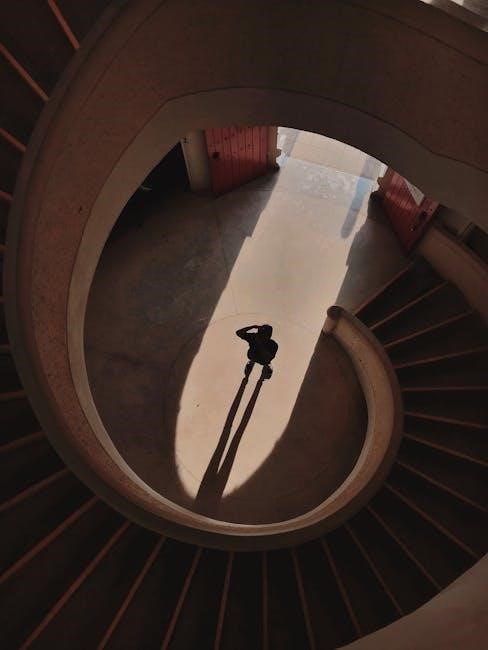
Basic Balloon Twisting Techniques
Basic balloon twisting techniques include folding and bubble methods, essential for creating simple shapes․ Twisting and knotting skills are fundamental for all balloon designs and decorations․
Understanding the Fold and Bubble Techniques
The fold and bubble techniques are foundational in balloon twisting, enabling the creation of basic shapes․ The fold technique involves bending the balloon to form corners or bends, while the bubble technique creates small, rounded sections․ Both methods are essential for shaping and proportion in designs․ To master these, start with a properly inflated balloon and practice applying gentle pressure․ These techniques are versatile and form the basis for more complex creations․ Using visual guides from PDF instructions can help perfect these skills, ensuring clean, precise results for any balloon design․
Creating Simple Shapes: Bubbles and Folds
Creating simple shapes like bubbles and folds is a fundamental step in balloon twisting․ Start by inflating the balloon and tying a knot at the end․ To make a bubble, twist the balloon about 1-2 inches from the knot, forming a small loop․ For folds, bend the balloon at desired points to create angles or corners․ These techniques are essential for building more complex designs․ Practice with a 260Q balloon and follow step-by-step guides from PDF tutorials to ensure clean, precise shapes․ Regular practice will improve dexterity and help master these basic yet crucial skills for balloon artistry․
The 3-Twist Method is a foundational technique in balloon twisting, enabling the creation of balanced and symmetrical designs․ Begin by inflating the balloon and tying a knot at the end․ Twist the balloon three times, creating equal-sized bubbles between each twist․ This method is ideal for forming the base of popular balloon animals, such as dogs․ Ensure the twists are tight and evenly spaced for stability․ Practice this technique using a 260Q balloon, as it is durable and easy to manipulate․ Step-by-step guides in PDF formats provide clear visuals and instructions, making it easier to master the 3-Twist Method for consistent results․
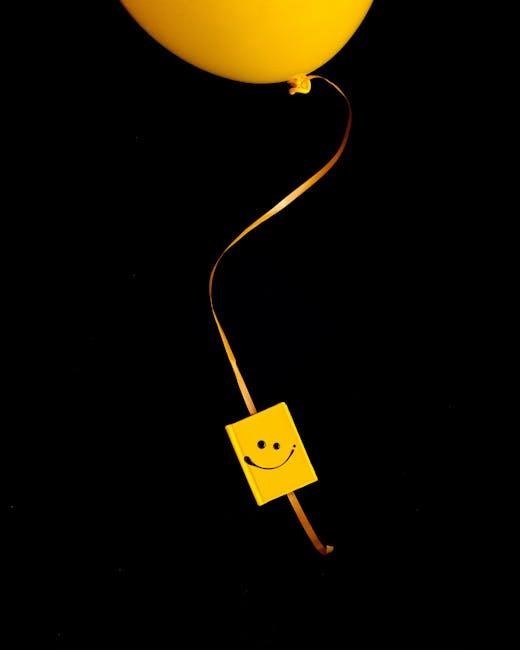
Popular Balloon Animals
Balloon animals are a hit at parties, with favorites like dogs, giraffes, and monkeys․ These designs are easy to learn and delight audiences of all ages․ Guides help․
How to Make a 3-Twist Dog
To create a 3-twist dog, start by inflating the balloon, leaving about 6 inches uninflated at the end․ Tie a knot at the uninflated tip to secure it․
Twist the balloon 3 times, creating small bubbles between each twist․ This forms the dog’s head, neck, and body․ Fold the remaining balloon back and twist again to shape the ears․
Adjust the twists to even out the proportions and ensure the dog stands upright․ Secure the balloon with a knot at the end for a finished look․
Step-by-Step Guide to Creating a Giraffe
To create a balloon giraffe, start by inflating the balloon, leaving about 6 inches uninflated at the end․ Tie a knot at the tip to secure it․
Twist the balloon to form the neck, creating long, narrow sections․ Fold the balloon to shape the head and ears․ Use small bubbles to create spots on the neck and body․
Twist the remaining balloon into legs, ensuring they are evenly proportioned․ Adjust the twists to create a natural stance․ Add a small tail at the end for a finishing touch․
Designing a Monkey with Balloon Twisting
To create a balloon monkey, start by inflating the balloon, leaving a small portion uninflated for tying․ Tie a knot at the end to secure the air․
Twist small bubbles near the knot to form the monkey’s head and ears․ Use folds to shape the body, creating a compact structure․
Twist the remaining balloon into arms and legs, ensuring they are proportional․ Add a small tail by twisting the end section․
Use markers to draw eyes and a mouth for a personalized touch․ Adjust the twists to achieve a natural, playful pose․
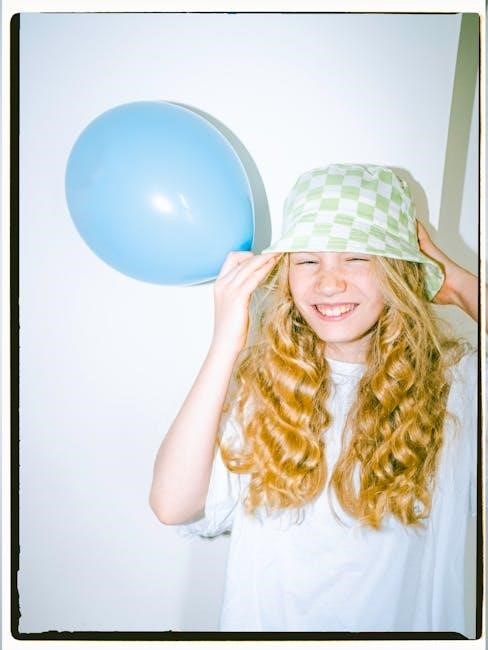
Advanced Balloon Twisting Techniques
Master intricate designs with multi-twist methods, layering, and advanced knots․ These techniques enhance creativity and precision, allowing for complex shapes and detailed balloon artistry․
Multi-Twist Designs for Complex Shapes
Multi-twist designs involve combining multiple balloon twists to create intricate, three-dimensional shapes․ By layering twists and folds, artists can craft complex forms like dragons, unicorns, or elaborate hats․ This technique requires precision and practice to ensure each twist is secure and aligned properly․ Advanced twisters often use spiral twists or double bubbles to add depth and detail․ Multi-twist designs are ideal for creating custom balloon art that stands out, offering endless possibilities for creativity and artistic expression․ Start with simpler shapes and gradually incorporate more twists as you gain confidence and skill․
Using Layering to Create Detailed Designs
Layering in balloon twisting allows artists to build intricate designs by stacking twists and folds․ This technique adds depth and detail to creations, making them visually striking․ Start with a base shape, then add layers such as spiral twists, double bubbles, or fold-and-twist details․ Layering enables the creation of complex designs like flowers with petals or animals with textured fur․ Properly securing each layer is crucial for stability․ Experiment with color coordination and symmetry to enhance the visual appeal․ By mastering layering, twisters can elevate their art, producing sophisticated designs that captivate audiences and showcase their skill level․
Advanced Knotting for Secure Balloon Shapes
Advanced knotting techniques ensure balloon shapes remain secure and durable․ One method involves tying the knot around the balloon’s uninflated portion, wrapping it around two fingers, and threading the tip through the gap․ This creates a reliable anchor point․ Another technique involves pushing the nozzle into the balloon’s tail and securing it internally․ These knots prevent the balloon from popping under pressure and allow for intricate designs․ Proper knotting is essential for maintaining the structural integrity of complex balloon art, ensuring creations hold their shape and last longer․ Mastering these knots elevates balloon twisting to a professional level․
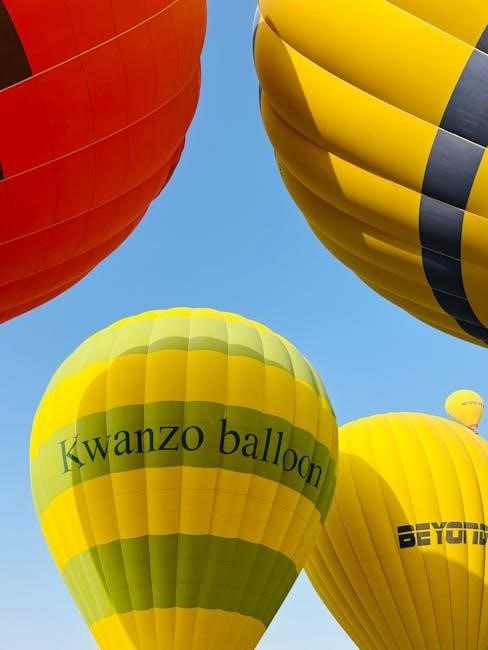
Balloon Twisting for Beginners
Balloon twisting is a fun, creative activity for all skill levels․ Start with basic tools like 260Q balloons and a hand pump․ Step-by-step PDF guides provide clear instructions, while video tutorials help beginners master fundamental twists and knots, ensuring a strong foundation for creating simple balloon shapes and designs․
Choosing the Right Balloons for Beginners
For balloon twisting, selecting the right balloons is essential․ Beginners should start with high-quality, durable options like 260Q balloons, which are ideal for their flexibility and ease of use․ These balloons come in various colors and are less likely to pop, making them perfect for learning․ PDF guides often recommend 260Q balloons for their consistent performance and versatility in creating basic shapes․ When choosing, ensure the balloons are the right size for the design and comfortable to handle․ Proper selection enhances creativity and ensures a enjoyable learning experience for new twisters․
Video Tutorials for Learning Balloon Twisting
Video tutorials are an excellent resource for mastering balloon twisting, especially for beginners․ They provide clear, step-by-step visual guidance that complements written instructions․ Many tutorials are designed for those just starting out, offering demonstrations of basic techniques and popular designs․ Advanced twisters can also benefit from tutorials that showcase intricate patterns and creative ideas․ Online platforms and PDF guides often include links to these videos, making learning interactive and engaging․ Whether you’re making a simple balloon animal or a complex design, video tutorials can help you improve your skills and confidence in balloon twisting․
Practice Tips for Mastering Basic Twists
Consistent practice is key to mastering balloon twisting․ Start by focusing on the fundamental techniques, such as inflating the balloon properly and tying secure knots․ Begin twisting at the knotted end to maintain control․ Use your fingers to grip and shape the balloon, ensuring even pressure for clean twists․ Practice simple folds and bubbles before progressing to more complex designs․ Regular repetition will improve dexterity and confidence․ Set aside time daily to work on basic shapes, gradually incorporating new skills as you become more comfortable․ Patience and persistence are essential for refining your balloon-twisting abilities․

Balloon Twisting Projects
Explore creative balloon twisting projects, such as crafting swords, hats, and flowers․ These designs are perfect for events or gifts, offering fun and customizable options․
- Balloon swords for themed parties․
- Hats that add a festive touch․
- Flowers for elegant decorations․
Creating a Balloon Sword
A balloon sword is a popular and easy-to-create project perfect for parties or themed events․ Start by inflating a 260Q balloon, leaving about 6 inches uninflated for the handle․ Twist the balloon to form the hilt, then create the blade by folding and twisting the remaining balloon into a long, narrow shape․ Secure the end with a small knot to finish․ Customize the sword by adding details like a guard or decorations․ This project is great for beginners and can be completed in just a few minutes with practice․
- Inflate the balloon partially․
- Twist to form the hilt․
- Shape the blade․
- Secure with a knot․
How to Make a Balloon Hat
Creating a balloon hat is a delightful project that combines creativity with balloon twisting skills․ Begin by inflating a 260Q balloon, leaving about six inches uninflated at the end․ Start with a bubble twist near the knotted end to form the base of the hat․ Continue twisting to create the brim, ensuring it fits comfortably around the head․ Attach the brim securely with a small knot․ Customize the design by adding twists, loops, or other decorative elements․ For inspiration, refer to online PDF guides or video tutorials that offer step-by-step instructions and creative ideas for balloon hats․
- Inflate the balloon partially․
- Form the base with a bubble twist․
- Create the brim and attach it․
- Customize with additional twists․
Designing a Balloon Flower
Creating a balloon flower is a charming project that showcases balloon twisting artistry․ Start by inflating a 260Q balloon, leaving about six inches uninflated․ Form the center of the flower with a small bubble twist․ Surround it with petal loops, securing each with a twist․ Continue until the flower has four to five petals․ Finish by twisting a small bubble at the base and tying it off․ For detailed guidance, refer to balloon twisting PDF guides or video tutorials, which provide step-by-step instructions and visual aids to help you craft a beautiful balloon flower effortlessly․
- Inflate the balloon partially․
- Create the center with a bubble twist․
- Add petal loops around the center․
- Secure with twists and finish with a knot․
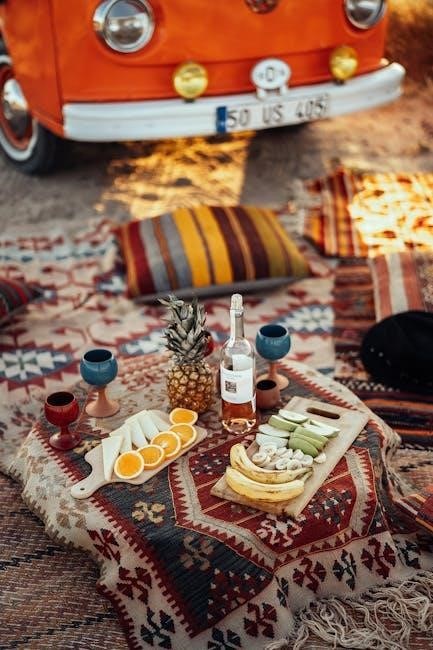
Balloon Twisting Resources
Discover the best PDF guides, video tutorials, and online communities for mastering balloon twisting․ These resources offer step-by-step instructions, tips, and inspiration for all skill levels․
- PDF guides for detailed instructions․
- Video tutorials for visual learning․
- Online communities for sharing ideas․
Best PDF Guides for Balloon Twisting
Premium PDF guides provide comprehensive instructions for balloon twisting, featuring step-by-step tutorials, high-quality images, and expert tips․ These guides cater to all skill levels, from basic shapes like dogs and giraffes to intricate designs․ Many include video links for visual learning, ensuring clarity and precision․ Popular guides often cover essential techniques, such as the 3-twist method, layering, and advanced knotting․ They also offer creative ideas for custom designs, making them invaluable for both beginners and experienced twisters․ These resources are perfect for mastering balloon art and expanding your creative possibilities․
- Step-by-step instructions․
- High-quality visual aids․
- Tips for mastering techniques․
Recommended Video Tutorials
Video tutorials are an excellent way to learn balloon twisting, offering visual guidance for mastering techniques․ Many tutorials cater to all skill levels, from basic shapes like dogs and giraffes to complex designs․ Platforms like YouTube and dedicated balloon twisting websites provide step-by-step instructions, making it easier to follow along․ These videos often include close-up shots and slow-motion demonstrations, ensuring clarity․ Popular channels and instructors share tips for improving dexterity and creativity․ Whether you’re a beginner or an advanced twister, video tutorials are a valuable resource for refining your skills and exploring new designs․
- Visual and interactive learning․
- Coverage of various skill levels․
- Step-by-step demonstrations․
Online Communities for Balloon Twisters
Online communities are vibrant hubs where balloon twisters share ideas, techniques, and inspiration․ Platforms like Facebook groups, forums, and specialized websites connect enthusiasts worldwide․ These spaces offer tutorials, tips, and feedback, fostering growth and creativity․ Many communities host challenges and events, encouraging members to push their artistic boundaries․ Additionally, newsletters and social media groups provide updates on trends, tools, and resources․ Engaging with these communities can enhance learning and networking, helping twisters refine their skills and stay motivated in their artistic journey․
- Connect with global twisters․
- Share and learn new techniques․
- Participate in challenges and events․
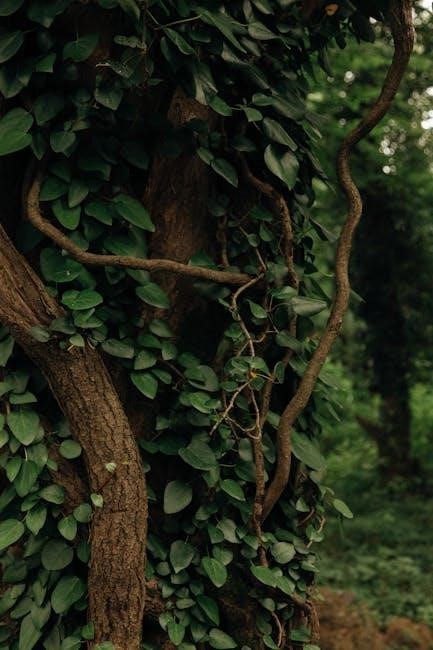
Tips for Improving Balloon Twisting Skills
Mastering balloon twisting requires practice, patience, and the right techniques․ Start by using high-quality balloons and pumps for better control․ Learn basic knots and twists, gradually progressing to more complex designs․ Watching tutorials and guides can provide clear instructions and inspiration․ Joining online communities offers valuable feedback and new ideas․ Experiment with different balloon sizes and colors to enhance creativity․ Consistent practice helps develop dexterity and confidence, ensuring each twist and fold becomes precise and secure․
Practice Techniques for Better Dexterity
Improving dexterity in balloon twisting requires consistent practice and focused exercises․ Begin with simple finger stretches and exercises to enhance hand coordination․ Start by inflating balloons to the correct size and practicing basic knots and twists․ Use a mirror to observe your technique and ensure even pressure․ Gradually increase complexity by attempting multi-twist designs․ Regular practice with high-quality balloons, such as 260Q, helps develop muscle memory․ Dedicate short sessions daily to refine your skills, focusing on precision and control․ Over time, these exercises will enhance your ability to create intricate shapes with ease and confidence․
Understanding Balloon Sizes and Colors
Balloon sizes and colors play a crucial role in balloon twisting, affecting both design and functionality․ Common sizes include 260Q, 160Q, and 350Q, each suited for different creations․ Smaller balloons like 160Q are ideal for detailed work, while larger ones, such as 350Q, are better for elaborate designs․ Colors range from solids to metallics, offering versatility for customizing creations․ Selecting the right size ensures ease of twisting, while color choice enhances visual appeal․ Experimenting with various sizes and colors helps in achieving the desired aesthetic and functionality for any balloon art project, making your designs stand out with precision and creativity․
Creative Ideas for Custom Designs
Balloon twisting allows for endless creativity, enabling the creation of unique, personalized designs․ From intricate animals to elegant decorative pieces, custom designs can elevate any event․ Consider themes like superheroes, princesses, or seasonal motifs to match occasions․ Experiment with layering techniques and color combinations to create vibrant, eye-catching designs․ Adding embellishments, such as ribbons or bows, can enhance the final look․ For personalized touches, incorporate names or special messages into the designs․ These creative ideas inspire artists to craft one-of-a-kind balloon art that reflects individual preferences and event themes, making every piece truly special and memorable․
Balloon twisting is a fun craft that blends creativity with skill․ This comprehensive guide covers basic to advanced techniques, inspiring practice and creativity․ Happy twisting!
Final Thoughts on Balloon Twisting
Balloon twisting is a delightful craft that offers endless creative possibilities․ Whether for personal enjoyment or professional use, mastering balloon twisting can bring joy to both creators and recipients․ The availability of detailed PDF guides and video tutorials makes learning accessible to everyone․ From simple shapes to intricate designs, balloon twisting is a skill that, with patience and practice, can become a lifelong passion․ Embrace the art and let your imagination soar with every twist and fold․
Encouragement to Keep Practicing
Consistent practice is key to mastering balloon twisting․ Even simple techniques require patience and repetition to perfect․ Celebrate each small success, as they build the foundation for more complex designs․ Don’t be discouraged by initial setbacks—every twist and fold brings you closer to creating stunning balloon art․ Use PDF guides and video tutorials as resources to refine your skills and stay motivated․ Remember, every balloon twisted is a step toward becoming a skilled artist․ Keep practicing, and soon you’ll amaze others with your creations!

